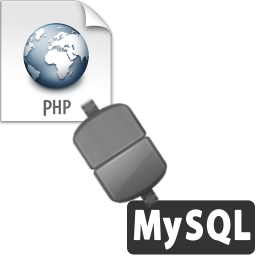PHP Login page script with three modules, the first one for allowing new users to register, the second for allowing users to login and the third page is a private page which only logged in users can access. Before reading this article make sure you read Connect PHP with MySQL because there is extensive use of PHP mysql functions throughout this article. The registration module uses INSERT query, the login module uses SELECT query to verify whether a user’s credentials exist in the database and creates a session and the private page checks to see if there is a session variable.Continue Reading…
Connect PHP with MySQL
Connect PHP with MySQL database, execute queries to manipulate information and retrieve data and display it using MySQL. Connecting with a MySQL database using PHP requires the use of three functions mysql_connect() mysql_select_db() and mysql_query() In this article I’ll be explaining how to connect to a MySQL server, create a database, create a table, insert values into it and retrieve it to display it in the form of HTML tables.Continue Reading…
List of PHP Timezones
The timezones listed here can be used with your php.ini file or htaccess file. To learn how to change your PHP time zone setting read Setting a Timezone in PHP.
This is a complete list of PHP supported timezones taken from the official PHP websiteContinue Reading…
PHP include() vs require()
If there is one feature that is highly useful and used by novices and experts alike its SSI (Server Side Includes). It reduces the need to copy paste repetitive code and you get a cleaner code. PHP has two functions for including files include() and require(). There is a lot of confusion on which to use when because both of them basically perform the same function of including the specified file but the difference comes by how they handle files.Continue Reading…
How to use custom php.ini files on shared hosting
The advantages of using php with apache web server are many. The wonderful file named .htaccess makes things easier by allowing the webmaster (thats you!) to play around with many settings which would otherwise need the php.ini to be edited. This is a boon for people having their websites hosted on a shared server. Such people can’t even dream of editing the php.ini file located on their web hosting provider’s server. Thus the concept of custom php.ini was born. Webmasters who have their website hosted on a server with support for custom php.ini can create a php.ini within their directory and provide all the necessary settings they require. But custom php.ini doesn’t work out-of-the-box. This article explains how to use custom php.ini on a shared hosting server.Continue Reading…
How to reset the Joomla Administrator password
A decade ago we were worrying about where we kept our car/house/company keys and as our wealth grew we had to manage more number of keys. Come back to the current world world we live now and the situation doesn’t get any better, the only difference is we need to manage our key to our online world aka the password. From emails to bank accounts, forums to social networking websites we have a whole paragraph of passwords and the situation worsens when you become a web designer/webmaster. A password for your web hosting account, one for the domain control panel another for your CMS and the list goes on. So it won’t take a long time before you click on that “Forgot Password” button.
Alright enough of storytelling lets get to business. So you’ve forgotten your joomla administrator password and you can’t find that much needed “Forgot Password” link on the joomla administrator login. Now what do you do, read this article further.Continue Reading…


